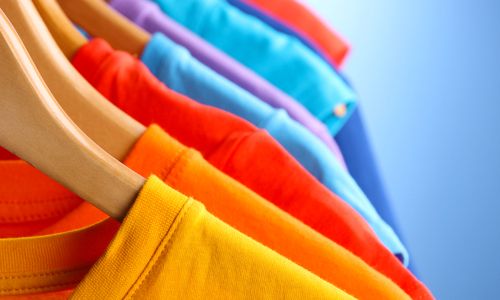

Consumers Against Toxic Apparel (CATA) increases awareness and educates consumers about the dangers of toxic apparel, connects the organic apparel community by partnering with organic companies nationwide and creates a resource that allows consumers to save money on their purchases. It’s the first campaign in the U.S. designed to bring attention to the growing concerns surrounding the non-regulated practices in the textile industry involving the saturated use of toxic chemicals in clothes.

Instead of focusing on the big dirty textile industry and asking them to change the way they produce clothes, CATA is creating a community of small companies’ already producing clean, safe, organic and natural apparel. The key goal is to make it easy for conscious consumers to source and buy organic clothes—and also to show consumers who believe organic clothing is ugly, boring and unfashionable just how pretty, colorful and stylish the selections are today.
Most consumers have no idea what the phrase “organic apparel” really means. Organic apparel is fiber grown without the use of pesticides, herbicides and synthetic fertilizers. Organic fibers include cotton, linen, hemp and wool. In order for these natural fibers to be classified as organic they must go through rigorous third party certification. There are other natural fibers, such as nettle, soy, vegan silk, peace and wild harvested silk, that are not organically classified but make excellent sustainable choices for clothes provided they are dyed using natural or low impact dyes.
Why is the way we produce clothes such a big deal?
It has become a big deal because of the health implications associated with toxic apparel, the environmental impact, as well as the sustainability factor. How much longer can we produce things that are harmful to humans, animals and our environment that will never go away? The rhetorical question is Why would we? when nature has provided in abundance everything we need to dress well. The life cycle of textiles affects everyone and everything on Earth from start to finish and beyond disposal. It all begins with the fiber/fabric type.
Natural fibers are much better for us simply because they feel good against our skin and natural—like an extension of who we are, courtesy of Mother Nature. Synthetic fabrics are restrictive and binding. They affect proper muscle movement and hold sweat against our skin. They’re created in a laboratory using hazardous and dangerous chemicals. The fiber is man-made and feels quite unnatural. Its creation is derived by combining thousands of chemicals together in a controlled laboratory process all while producing carcinogenic hazardous waste, contaminated water, air pollution and even climate change. Synthetic fibers include polyester, rayon, acrylic, nylon, acetate, ploynosic, vinyl and microfibers. Through clever marketing, other fabric types such as modal, viscose, tencel and loycell have been introduced by the industry as natural fibers and compared to the real ones.

 233k
233k  41k
41k  Subscribe
Subscribe 